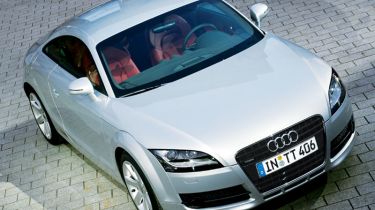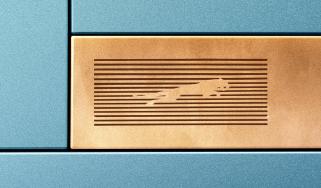Audi TT
Auto Express has done it again! We're the world's first magazine to get behind the wheel of the new TT, unveiled in Germany

It's not quite the style icon that its predecessor was, but there's no denying the new TT is handsome. Cabin quality is exceptional, and there is some very clever new technology, too - including a magnetic ride damper suspension system. What's more, the stiffer aluminium Audi Space Frame should make a great basis for company engineers to develop the newcomer's handling.
There's no doubt that the stunning Audi TT coupé is set to become the most eagerly anticipated sports car of the year, thanks to its bold design, spacious interior and hi-tech engineering. Due to be launched at September's Paris Motor Show before hitting UK roads soon after, it will rival the likes of the Nissan 350Z and Porsche Cayman.
With its flared wheelarches and sleek silhouette, it's clear designers wanted to make the most of the original TT's styling. However, if you look beyond the distinctive bubble canopy and aggressive nose, there are some radical changes, particularly when it comes to the under-pinnings. The most important alteration is the new Audi Space Frame aluminium chassis, which makes the car 90kg lighter than its predecessor.
This not only improves fuel economy, but gives a better power-to-weight ratio, too, meaning the car should be faster and more agile than its predecessor - with a 0-60mph time of 5.7 seconds in the top-of-the-range 3.2-litre V6. The newcomer is faster than the outgoing quattro Sport, which completes the benchmark sprint in 5.9 seconds.
To keep this extra muscle in check, there's a new electric pop-up wing. At low speeds, it stays hidden to leave the car's curvaceous rear unspoiled, yet when raised, it helps glue the tyres to the road and reduce lift. Extra practicality is also promised, as the new TT is considerably bigger. The fact that the car is now 78mm wider and 137mm longer gives it a more bullish stance. This is further helped by Audi's now familiar aggressive family grille.
From behind the wheel, it's clear the firm has worked hard to offer a more spacious, driver-focused cabin. No expense has been spared on build quality, either, as the fabrics on the seats and dash are first-class.
The dials are simple, with brushed chrome detailing, although a slightly over-fussy dual temperature control dominates the central console. However, a lower driving position in well bolstered seats really gives a sports car feel.
Yet it's not all good news. Despite the extra length and width, the rear seats are still far too small to accommodate grown-ups comfortably. When we climbed in the back, we were forced into an awkward knee-hugging stance, and could lift our head upright only if the boot was open. That said, a long tailgate which curves into the roof towards the B-pillar means there is more light for rear passengers, while load space has increased to 290 litres.
Standard kit will include air-con and a sporty flat-bottomed steering wheel. For £1,100, buyers can add Audi's clever magnetic damper system, which switches the ride between sports and comfort. The six-speed manual box can also be upgraded to a DSG-based S-tronic transmission for another £1,400.
From the start, both two and four-wheel-drive editions will be available, and the range will offer a pair of petrol engines: a 3.2-litre V6 quattro and a 200bhp 2.0 turbo shared with the VW Golf GTI. Prices start at £24,625 for a 2.0 two-wheel-drive car, while flagships will cost nearly £30,000.



